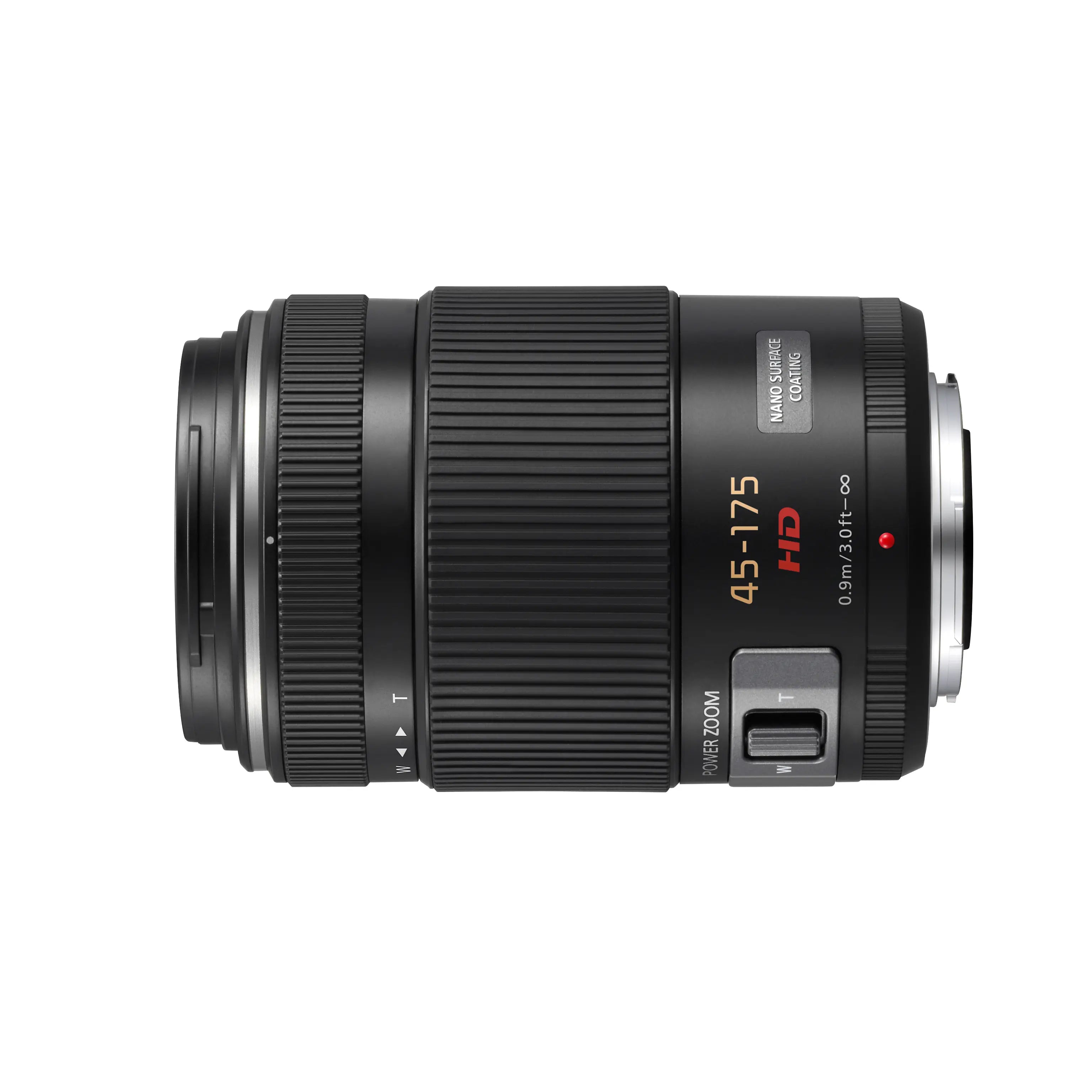Product Description
Panasonic 45-175mm G X Vario PZ Interchangeable Lens
The Panasonic LUMIX G X VARIO PZ 45-175mm f/4.0-5.6 ASPH. POWER O.I.S. is a cutting-edge interchangeable zoom lens designed for the LUMIX G Micro System and compatible with Micro Four Thirds cameras. This premium lens from Panasonic's "X" series delivers outstanding image quality with lifelike textures, edge-to-edge sharpness, and vibrant contrast. Whether you're capturing detailed wildlife shots or distant landscapes, this compact and lightweight lens offers powerful performance with its electric-powered zoom operation.

Key Features:
- 45-175mm focal length (90-350mm equivalent): Versatile zoom range ideal for a variety of shooting situations, from portraits to distant landscapes.
- POWER Optical Image Stabilization (O.I.S.): Reduces camera shake for sharper handheld shots, even in low-light conditions.
- Nano Surface Coating: Minimizes ghosting and flare for clear, high-contrast images.
- Multi-Actuator Floating Inner Focus System: Controls 3 lens groups independently for superior resolution and contrast across the zoom range.
- Compact and lightweight: Offers a shorter and lighter design, making it highly portable without sacrificing performance.

Premium Optical Performance
The Panasonic 45-175mm G X Vario PZ lens features 2 ED elements to suppress chromatic aberration, ensuring high-resolution image quality throughout the zoom range. Panasonic’s Nano Surface Coating technology significantly reduces reflections and minimizes ghosting and flare for super-clear, high-contrast images, even when shooting in challenging lighting conditions.

Electric-Powered Zoom for Smooth Operation
This lens introduces an electric-powered zoom that provides smooth, continuous zoom control, perfect for videographers and photographers who need precision. The zoom mechanism maintains a constant length during operation, allowing for easy handling and stability, especially when mounted on a gimbal or tripod.

Fast, Silent Autofocus with Inner Focus System
Equipped with an inner focus system driven by a stepping motor, the lens offers fast, silent, and smooth autofocus, making it ideal for both photo and video work. The lens supports Light Speed AF, achieving focus in just 0.15 seconds, while the fast aperture control reduces shutter time lag by approximately 20% compared to previous models.

Compact and Lightweight Design
Designed for photographers on the go, the Panasonic 45-175mm G X Vario PZ lens is extremely compact and lightweight, despite its powerful zoom capabilities. Its shorter barrel length and reduced weight make it an excellent choice for travel and outdoor photography, offering exceptional portability without compromising on performance.

Capture stunning photos and videos with the Panasonic LUMIX G X VARIO PZ 45-175mm f/4.0-5.6 ASPH. POWER O.I.S. Lens—a compact, high-performance zoom lens designed to meet the demands of photographers and videographers alike.

For full specifications click Here
Payment & Security
Your payment information is processed securely. We do not store credit card details nor have access to your credit card information.


















